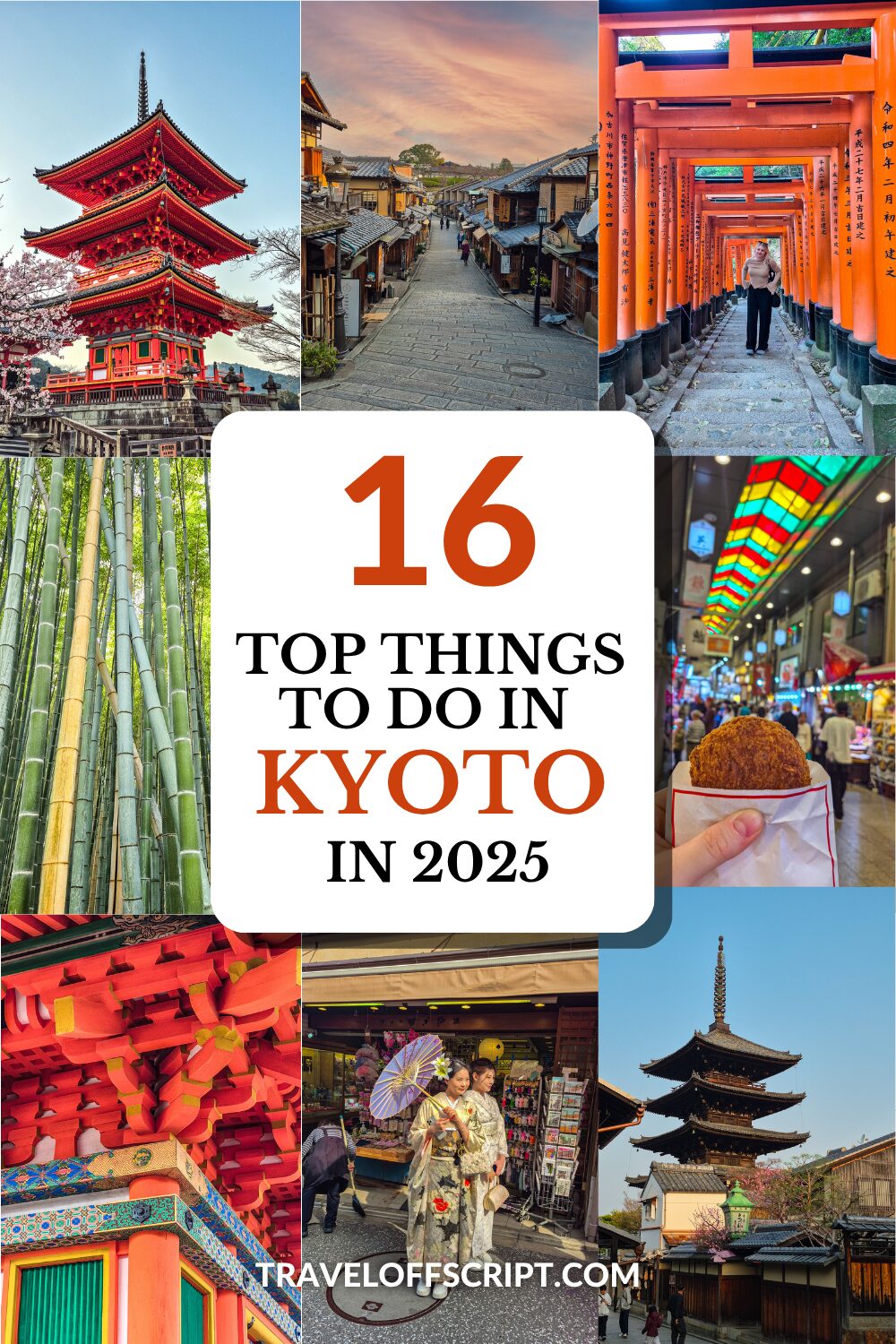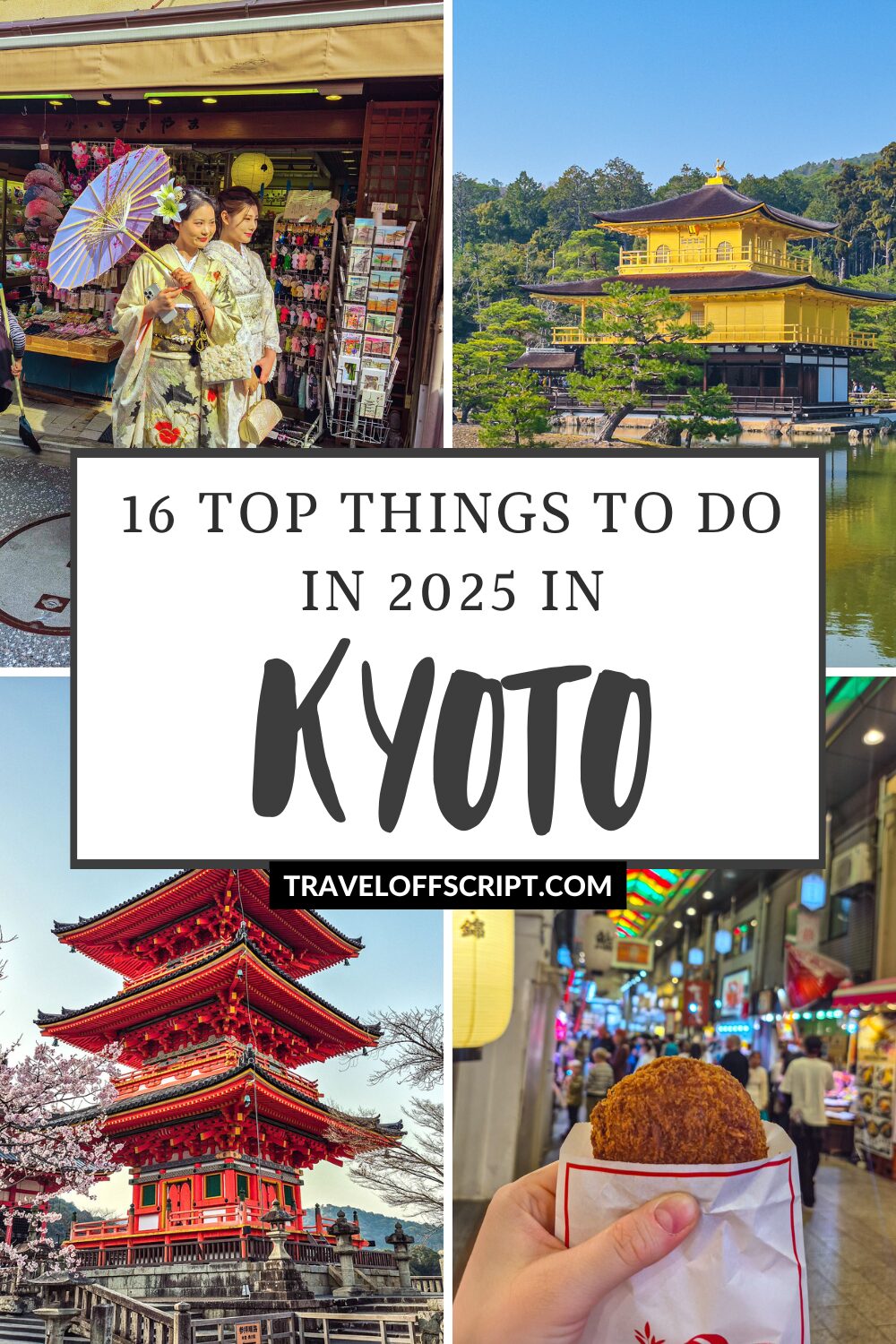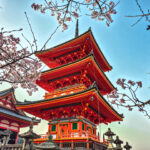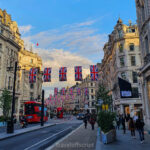16 Must Do Things in Kyoto
(2025 Guide)
Bell 2nd June 25
Kyoto is a city of temples, rich history, and vibrant culture. It’s one of my favorite places I’ve visited in Japan, with so much to see and experience. From the endless bamboo groves to the thousands of striking red Torii gates and some of the most delicious food you’ll ever try, there’s truly something for everyone.
I recently had the chance to visit Kyoto during my two-week trip to Japan, and I quickly fell in love with the place. It’s got the most stunning temples and shrines, delicious food, beautiful nature, and loads of history. I only spent two days there and really wished I’d stayed longer, so I’d definitely recommend giving yourself at least three days to explore!
Here are my 16 top things to do in Kyoto, including all of the famous landmarks and some more off-the-beaten-path attractions:
Table of Contents
ToggleHow to get to Kyoto?
Whether Kyoto is your first stop and you are flying in or headed to Kyoto from your previous stop in Japan, here is exactly how to get to the city center:
By plane
Kyoto doesn’t have any airports of its own; the nearest ones are located in the nearby city of Osaka – Kansai International Airport and Itami Airport.
Itami Airport is exclusively for domestic flights, so if you’re travelling from places like Kyoto, Tokyo, or other regions in Japan, you’ll need to keep that in mind. I personally arrived from Northern Japan, specifically Sapporo, after finishing my ski season there, but my flight was directed to Kansai Airport.
From your airport in Osaka, you can then get to Kyoto via train, bus or private shuttle.
Train: Kansai Airport Express from $13.35 (fastest way) or head into Osaka (all the info about getting from Osaka airports to the city centre here) and get the local train for $3-4
Bus: Airport Limousine Bus for around $20
Private Shuttle: Book here – from $150
From Tokyo to Kyoto
If you are coming from Tokyo, you can get a Shinkansen (the express train). It costs around $100 and takes only 2 hours. Check for tickets here.
If you are on a budget, there are night buses from e.g. Willer’s Express you can take (check out my experience on a night bus here). Tickets start at 5000yen ($35) but can go up to 14,000yen ($97) for the lie-flat seats.
Where to stay in Kyoto?
Kyoto is very well connected by buses and the subway, and most tourist areas are within walking distance. Some of the best places to stay to be near the highlights include Kyoto Station, Gion, Downtown and Northern Higashiyama. Check out my full accommodation guide here.
Best hostels in Kyoto for backpackers:
Piece Hostel Kyoto – Lovely dorm rooms with big beds and curtains. Location is super central, right by Kyoto station.
Woman Only Guesthouse Nanohana (Female only) -This one is for my fellow solo, female travellers. The location is unbeatable and even private rooms are really affordable.
Ryokan Hostel Gion – Really nice dorms with lots of privacy in the dorm beds and located right in the heart of Gion so perfect for sightseeing.
The Millennials Kyoto – Located right in downtown Kyoto, this hotel has high-end pods that allow for ultimate privacy and comfort.
Best hotels in Kyoto:
$ HOTEL RINGS KYOTO – Super lovely and affordable hotel right in downtown Kyoto. Rooms are nice and very spacious for Japan!
$$ KYOTO Bukkouji Shinmachi – Right in the heart of downtown, this hotel has lovely, modern rooms at fair prices.
$$$ Higashiyama Shikikaboku – With the ideal location for sightseeing and a stunningly beautiful exterior and interior, this hotel is one of the best!
How to get around Kyoto using public transport?
Kyoto’s public transportation network is quite extensive and efficient. You can either purchase single trip tickets from the ticket machines each time or use an IC card. An IC card is a prepaid card that you can use for transportation or even the convenience stores, lockers and many more things around Japan.
The version for the Kansai region, which includes Kyoto, is known as ICOCA, but you can also use Tokyo’s Suica card or any other similar card. Prices start at ¥1000, which includes a refundable deposit of ¥500 at the end of your holiday. The remaining ¥500 is loaded onto the card. You can purchase the ICOCA at JR stations or Kansai Airport, and you can top it up at any train or subway station, as well as most convenience stores.
I found Google Maps to be very helpful for navigating around Kyoto and planning my transportation. For instance, a bus journey costs 230 yen. There is plenty of public Wi-Fi available in Japan, but I would suggest getting an E-Sim for the easiest navigation.
Top things to do in Kyoto
1. Explore the famous Arashiyama Bamboo Grove

Arashiyama Bamboo Grove is a brilliant place to kick off your Kyoto adventure. It’s best to arrive as early as you can, ideally around 7am for those empty photos. I visited Arashiyama around midday, and even though it was quite busy, I still managed to snap some lovely photos and take in the stunning beauty of the forest.
The bamboo grove is located around 30-minutes by train from Kyoto station or 40min-1hour by bus from different areas of downtown Kyoto. The trail through the forest is only about 500m long one-way and will take you around 30-minutes. There are a couple of shrines along the way that are worth checking out.
At the end of the walk you will find Okochi Sanso Garden, a gorgeous Japanese garden for just 1000yen entry ($7). In here it is very tranquil, a stark contrast to the hustle and bustle of the Bamboo forest.
2. Wander Through the Scenic Arashiyama Distric
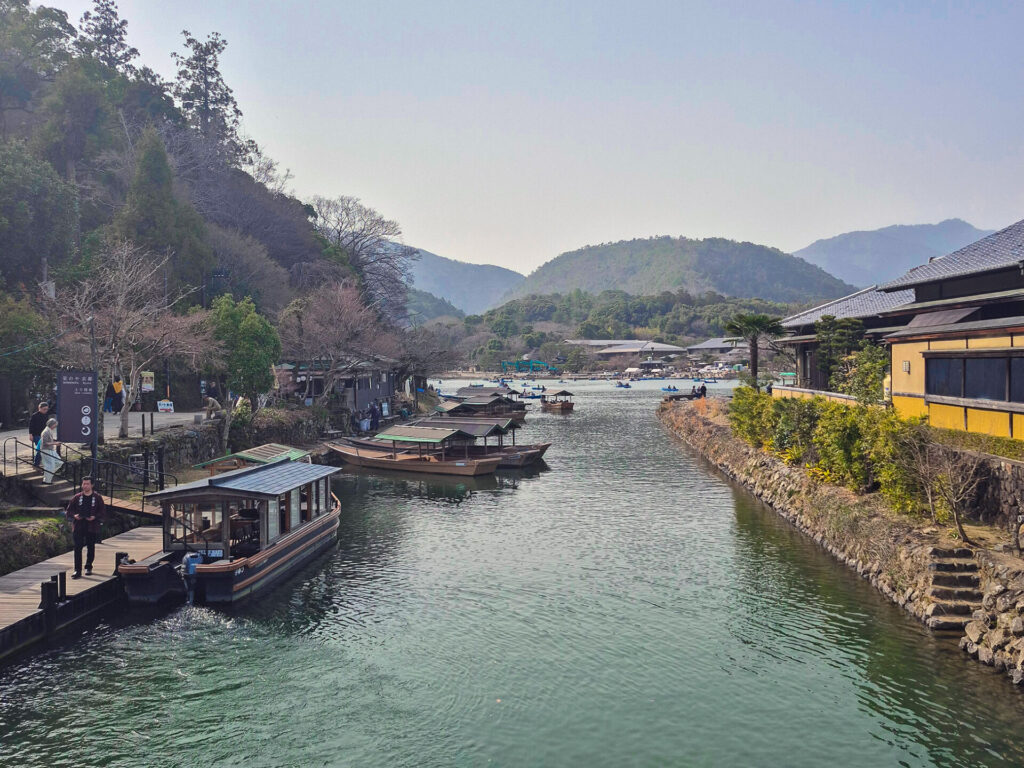
While Arashiyama is famous mostly for the bamboo forest, there is actually a lot more to it, from nature to temples to shopping. Two of the main temples are Tenryu-ji, which is UNESCO-listed, and Jojakko-ji. Both are worth a visit, their traditional facades surrounded by nature.
The Hozugawa River runs right through Arashiyama’s mountainous terrain. Whether walking along the riverside or taking a boat tour, the emerald-blue water is a must-see in this area. There is a great viewing deck at the other side of the bamboo forest called Okochi Sanso Gorge Observation Deck, where you get a birds-eye view of the river bends.
Another activity in this area is Arashiyama Monkey Park, which is home to about 120 snow monkeys. It is a short hike to get up to the park, but totally worth it for this unique experience. Admission is 800 yen ($5.50).
I also loved wandering the streets of Arashiyama, where you will find countless souvenir and ceramics shops, street food, delicious matcha, Kimono rentals and so much more. The area is very lively and there is something new to discover around every corner. Make sure to grab a bite to eat here to refuel for the afternoon.
3. Take photos in the famous streets of Ninenzaka and Sannenzaka
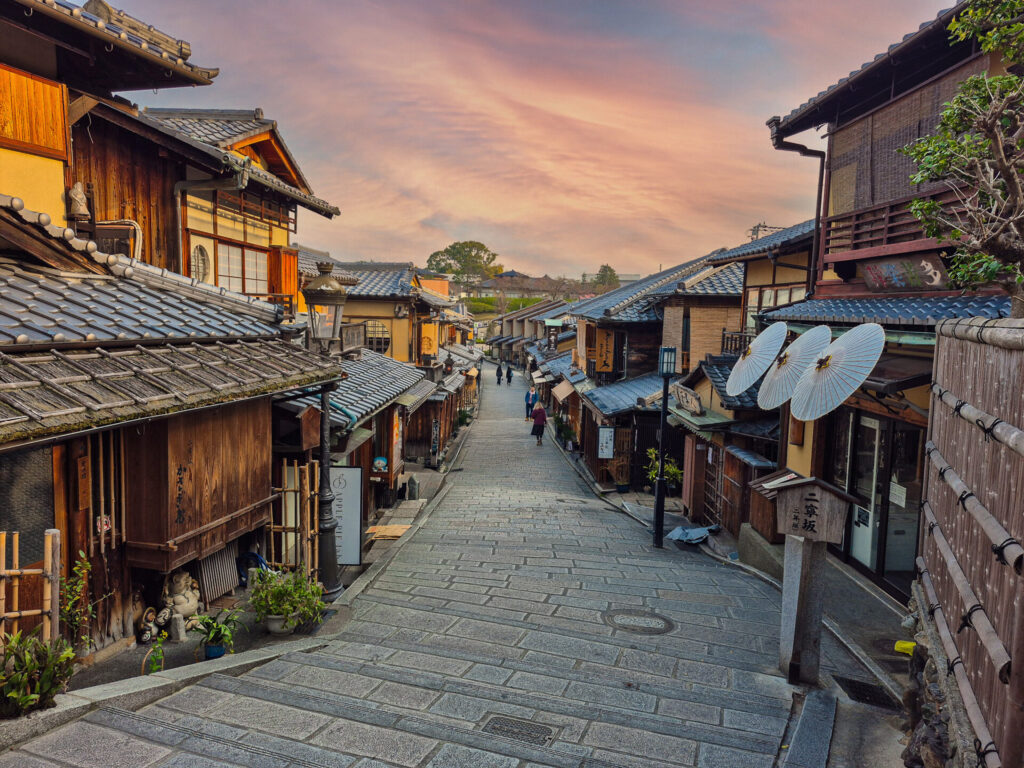
Ninenzaka and Sannenzaka roads in Gion with a background of the Hōkan-ji Temple (Yasaka Pagoda) are probably the most famous photo spots in Kyoto. If you are wanting to see them without the masses of people, you’ll have to arrive around 6-7am. Which is extremely early for a holiday I know, however it is 1000% worth it in this case. Both streets gently slope upwards towards Kiyomizu-dera Temple.
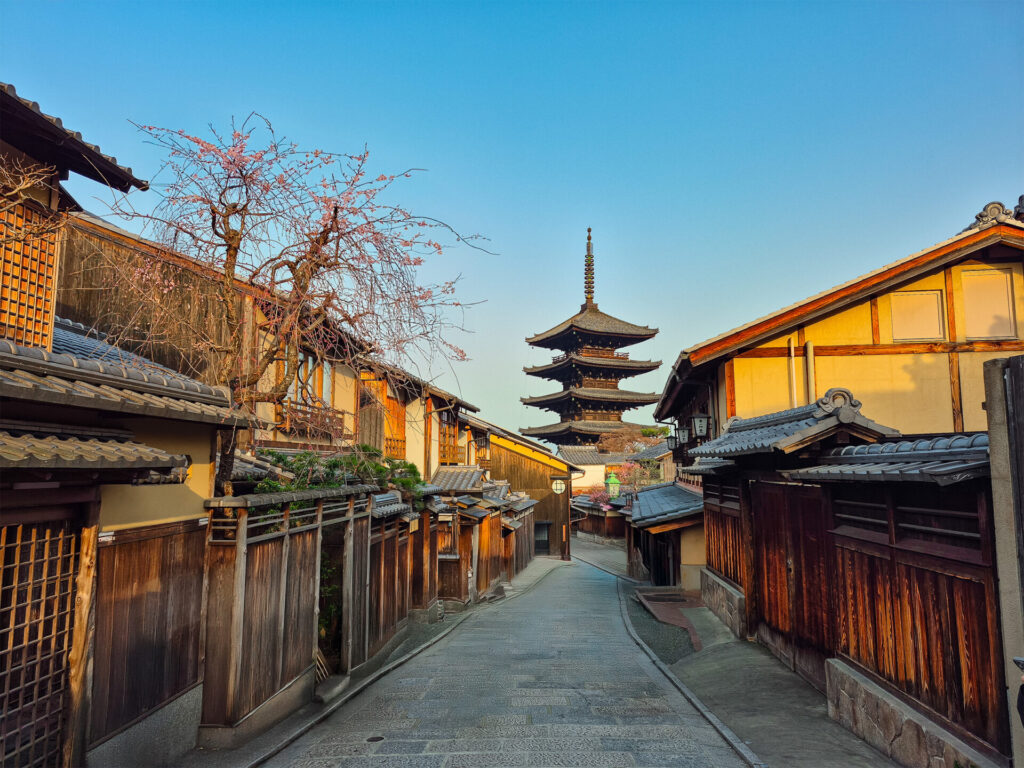
The exact location for the famous photo of Yasaka Pagoda shown above is here. The streets are filled with traditional shops and restaurants that really come alive around 8 or 9 in the morning. You’ll discover local delicacies, plenty of souvenirs, and traditional Japanese crafts here. Tourists start gathering at the popular photo spots from 7am. If you’re after some truly quiet streets, swing by at night – it offers a really unique chance to snap some photos and gives you a glimpse of what Kyoto might have looked like before everything got modernised.
4. Marvel at the details of Yasaka Pagoda


Yasaka Pagoda is located between Nanenzaka and Sannenzaka and worth a closer look. The tower is 46m tall and has a history of over 500 years. You will often find tourists with their rented Kimonos here, battling for a shot under the gorgeous tiers of the pagoda. Get closer to the tower for some beautiful detail shots and visit at night for a totally unique experience.
5. Explore Kiyomizu-dera before the crowds
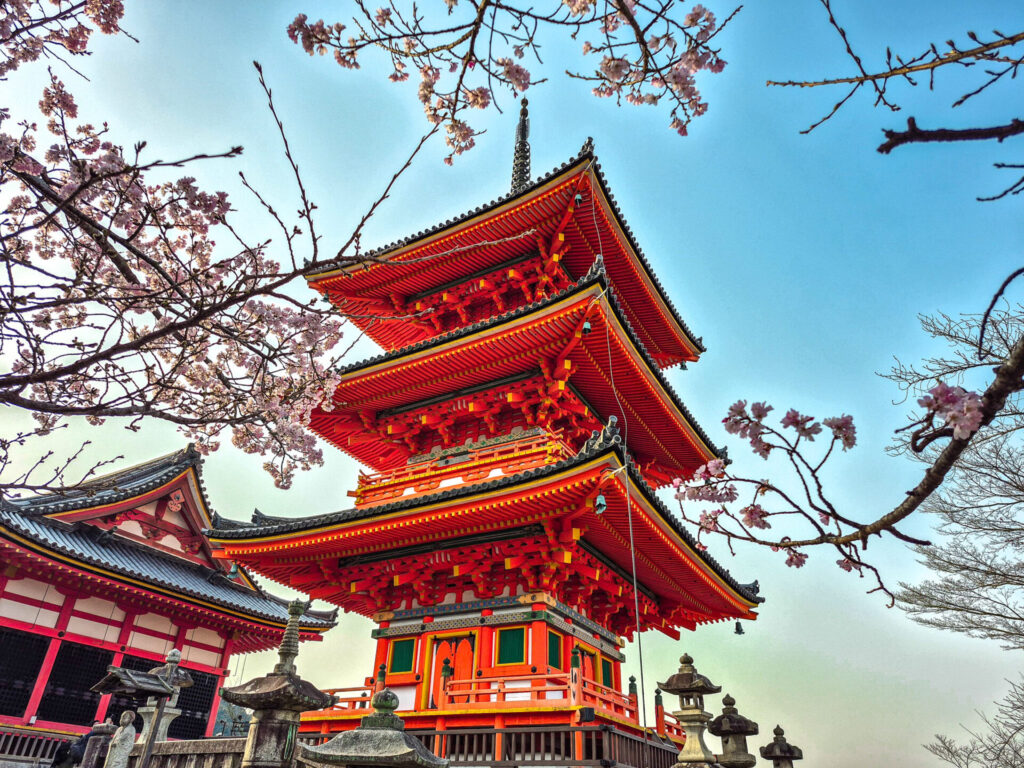
All roads lead to Rome, or in this case, Kiyomizu-dera Temple. It is located at the top of the hill in Gion and overlooks Kyoto. As you step onto the grounds, the first thing you’ll notice is the Niomon Gate along with a gorgeous red pagoda that’s packed with beautiful details. It is one of the tallest of its kind in Japan, standing at 31 metres.
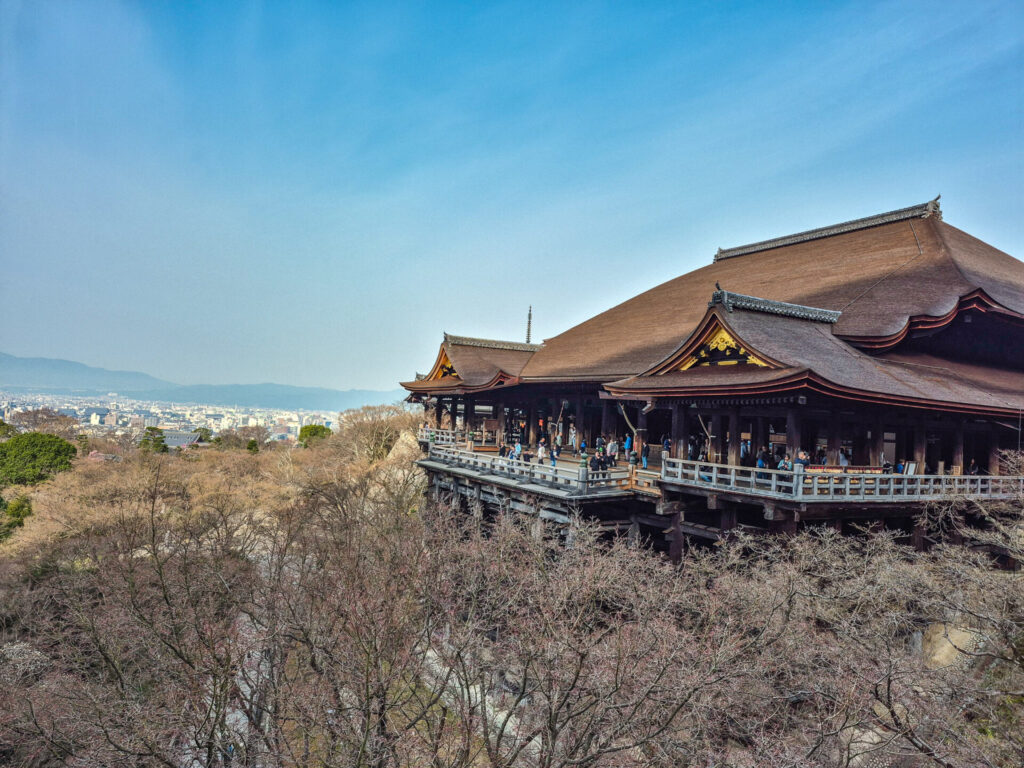
The temple itself costs 500yen ($3.50) entry and is build upon a fascinating 13-meter-high wooden stage. Inside, you will find the statue of the Eleven-headed Thousand-armed Kannon Bodhisattva, Otowa Waterfall (is said to make wishes come true) and several other buildings. I’d highly recommend going inside this temple, I found it a serene and enlightening experience, especially fairly early in the morning.
6. Wander the Gion district and its endless temples

Make time to fully explore the old streets of Gion, Kyoto’s famous geisha neighbourhood. There are endless temples in this area, one more beautiful than the next. Some of my favourites were Kodaiji Temple which has a beautiful Bamboo forest, Ryōzen Kannon Temple with its huge Buddha, Yasaka Koshindo which has colorful cloth balls everywhere (pictured above) and Kenninji Temple.
Gion also has a couple of small back roads with historical buildings. They are usually slightly hidden and identifiable by signs that say “no photos”. Walking down these streets feels like entering a different era, a peaceful bubble of old Japanese architecture and gardens.
Other things to do here are going shopping, taking part in a tea ceremony in a traditional teahouse or renting a Kimono to take some pictures in the beautiful streets of Gion.
7. Finish your Gion tour at Yasaka Shrine
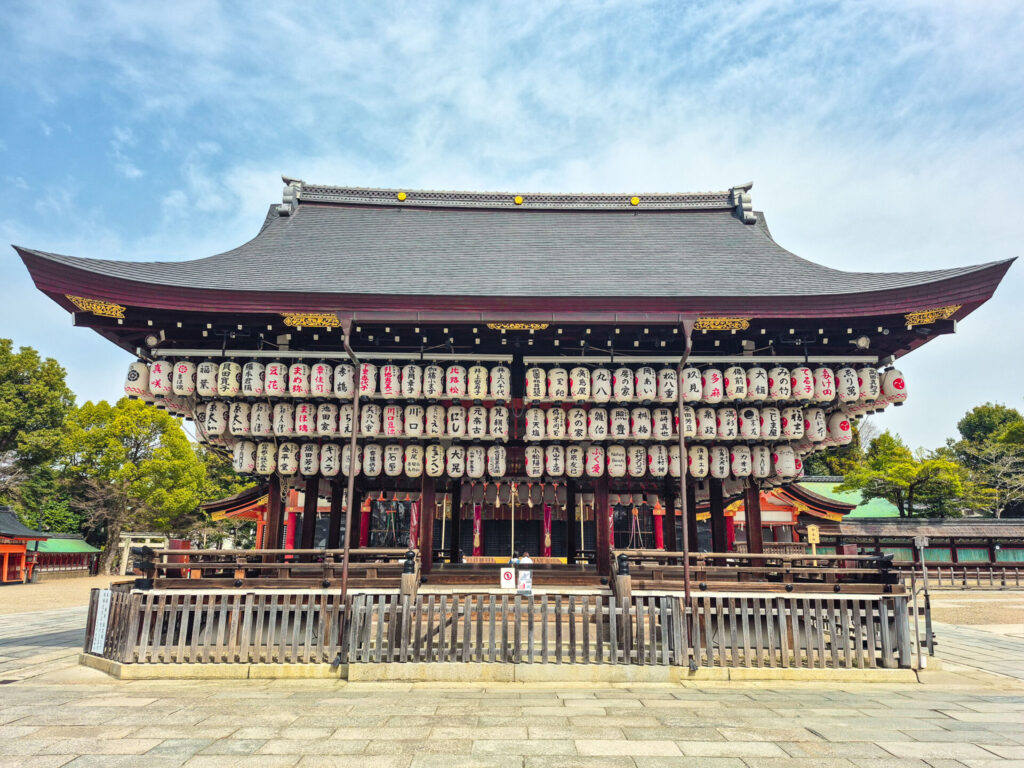
One of the most well-known shrines in Kyoto is no doubt Yasaka Shrine, or Gion Shrine. It is free to enter and almost the starting/end-point of Gion or at least the historic small streets. The shrine itself is beautiful, with lanters hanging from the ceiling and surrounded by red buildings and smaller shrines. There are also a ton of street food carts in this area and it generally buzzes with worshippers, tourists and vendors.
8. Bask in serenity at Higashizama Jisho-ji

The Silver Pavilion, also often referred to as Ginkaku-ji, is a beautiful, Zen temple slightly outside the centre. Admission costs 500yen ($3.50).
If you are into Japanese landscape architecture, this place is your dream come true. The entire layout, gardens and buildings are beautifully designed in meticulous detail. It features a sand and moss garden, temple buildings, a main hall and even a hill with views over the entire area. I’d highly recommend visiting here and enjoying the serenity.
9. Rent a Kimono and take part in a traditional tea ceremony

There are countless of Kimono rental shops in Kyoto, mostly at the main attractions such as Gion district and Arashiyama. Many of them come with a photo shoot to get those stunning pictures in front of Kyoto’s most beautiful temples and streets. Others are part of a traditional Japanese tea ceremony where you learn of the history and traditions associated with the tea ceremony. Highly recommend this experience!
10. Go shopping in Gion downtown

Between Yasaka Shrine and the Kamo River, you will find more modern streets with cafes, restaurants, souvenir shops, bars and gorgeous buildings. Make sure to stop by the Miffy Cafe for some nostalgic sweet treats.
Head to Shirakawa Canal for a relaxing evening stroll along traditional wooden townhouses and historic bridges. Many say it is Kyoto’s best spot for viewing the cherry blossom in bloom.
11. Have a traditional dinner in Pontocho alley
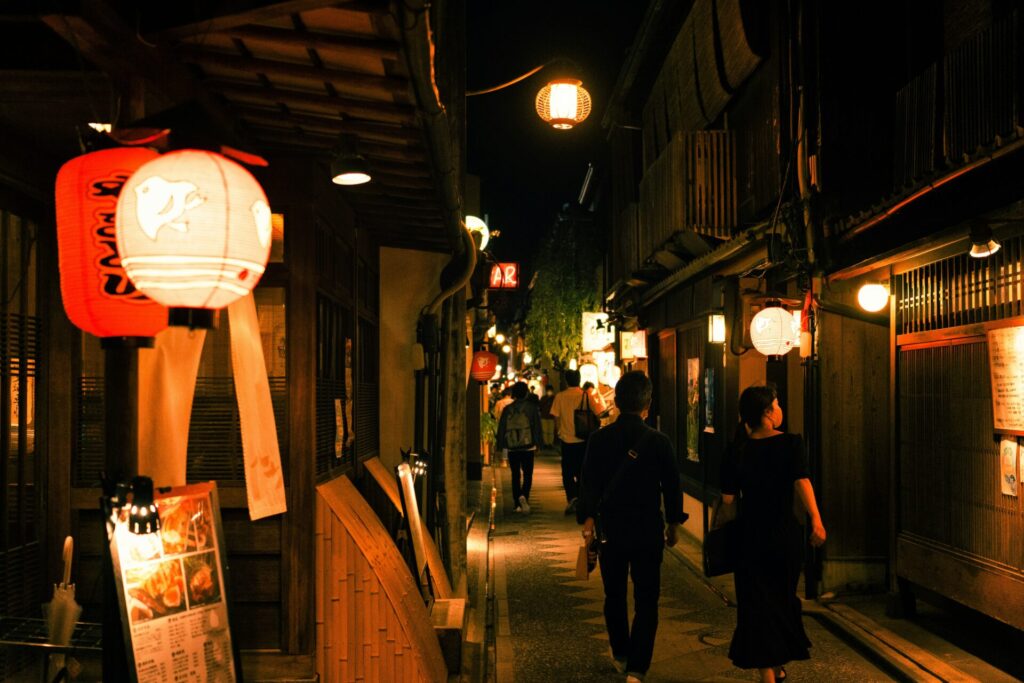
Pontocho is a historic alley lined with world-class restaurants. Walking here in the evening feels like stepping back in time. the traditional houses only lit up by lanterns that illuminate the narrow alley in a warm glow.
Some restaurants even have terraces that overlook the Kamogawa River while serving traditional, Japanese food. I personally loved the smaller restaurants that were hiding in the side streets of Pontocho alley. They felt a lot more authentic, with locals lining the seats and no English menu in sight.
12. Go for a stroll down Philosopher’s Path
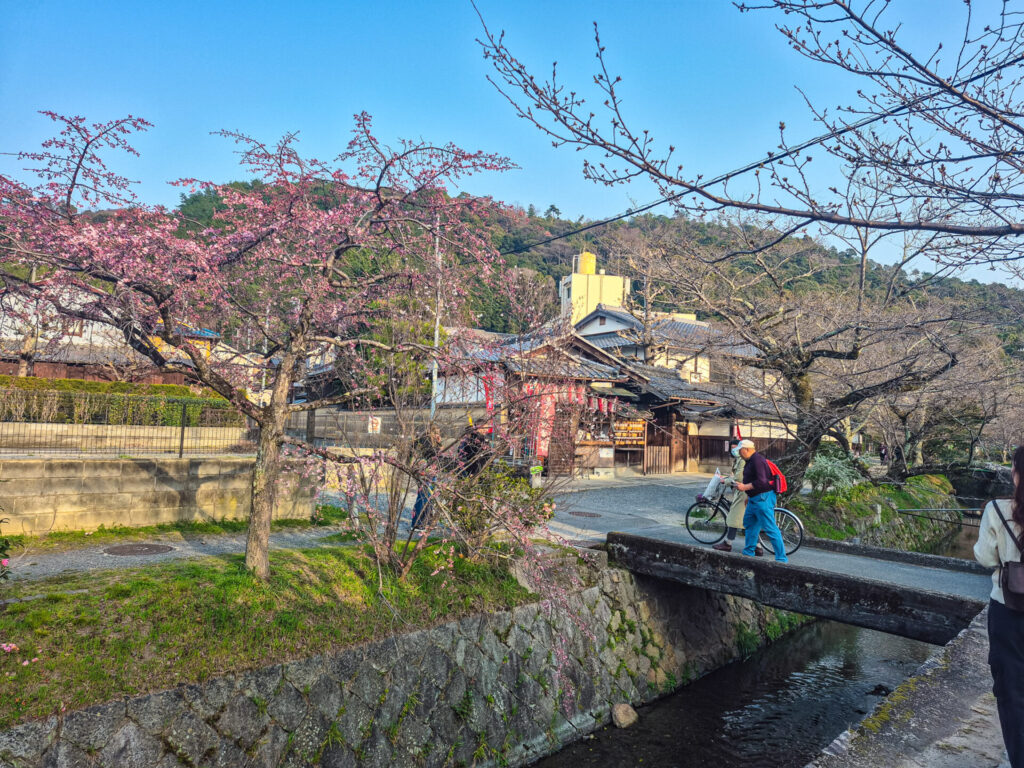
Said to be named the Philosopher’s path after Kyoto University Professor Nishida Kitaro who used this route as his daily meditative walk, it makes for a serene and beautiful walk along a small canal. The stony path is well-known for the beautiful cherry blossoms that bloom along the river every spring, as well as the stunning golden leaves in autumn.
We were there a little early so there were few cherry blossoms, but the walk was still lovely and there were lots of local shops and cafes along the way to grab some caffeine or a bite to eat. The path is about 2km long and ends in the neighbourhood of Nanzenji.
13. Hike the 1000s of red Torii gates at Fushimi Inari Shrine
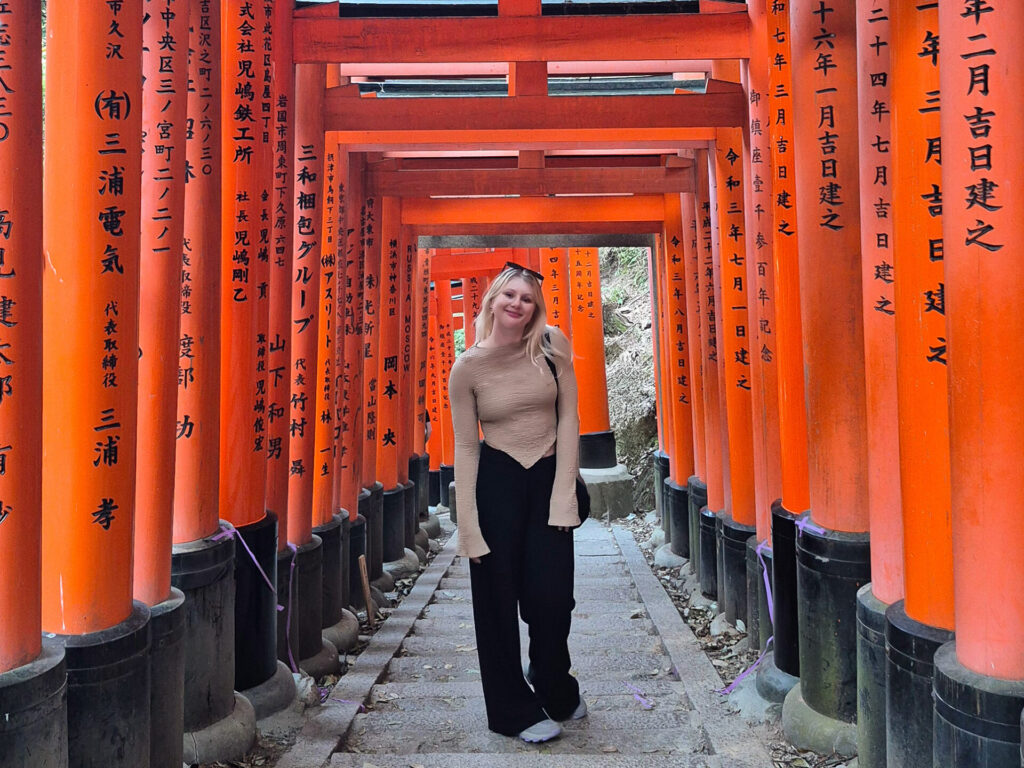
I’d recommend another 6am start for the famous 10,000 red Torii Gates at Fushimi Inari Shrine. We got there around 7.30am and it was already pretty packed at the bottom. Luckily (or unlucky, depends on how you see it), the hike up is a little tough so it gets much quieter the higher you walk. It is said to be around 12,000 steps to the top, and from experience I can tell you it’s a workout – wear comfy shoes!
This was one of my absolute highlights on this trip, there is nothing comparable to the thousands of red gates that snake up through the forest to the top of Mt. Inari. The loop up and down is supposed to take 2-3 hours, I think it took us around 2 with photos and little breaks.
Fushimi Inari is actually a complex of shrines, so we saw quite a few different ones with their own worshipping areas and often even a store with snacks and souvenirs, as well as Ema wishing plaques. My favourite were the ones that looked like tiny red Torii gates.
As you are heading back down the mountain, you will find a couple stores and cafes dotted at the bottom. If you are early enough, get a seat at Vermillion Cafe. It has delicious food and drinks and overlooks a pond (sign up to the waiting list asap when arriving). Even further down are lots of food stands with traditional Japanese street food, we tried the Hiroshima-style Okonomiyaki and it was amazing.
14. Grab lunch at Nishiki market and explore Downtown Kyoto

Don’t miss out on exploring downtown Kyoto, specifically the area around Nishiki Market. Check out the little cute side streets that hide local stores, the big Japanes stores (GU and Daiso are my favourites) and admire the hustle and bustle of modern-day Kyoto.
There is also no better place to try Kyoto’s delicacies than the famous Nishiki Market. This is a long, vibrant shopping street that is lined with one food stall after the next. Most places sell some sort of meet or seafood stick, but you can also find many other treats. I recommend the fried croquettes, mine had a corn mixture in it and was delicious.
15. Marvel at the golden beauty of KinKaku-ji temple
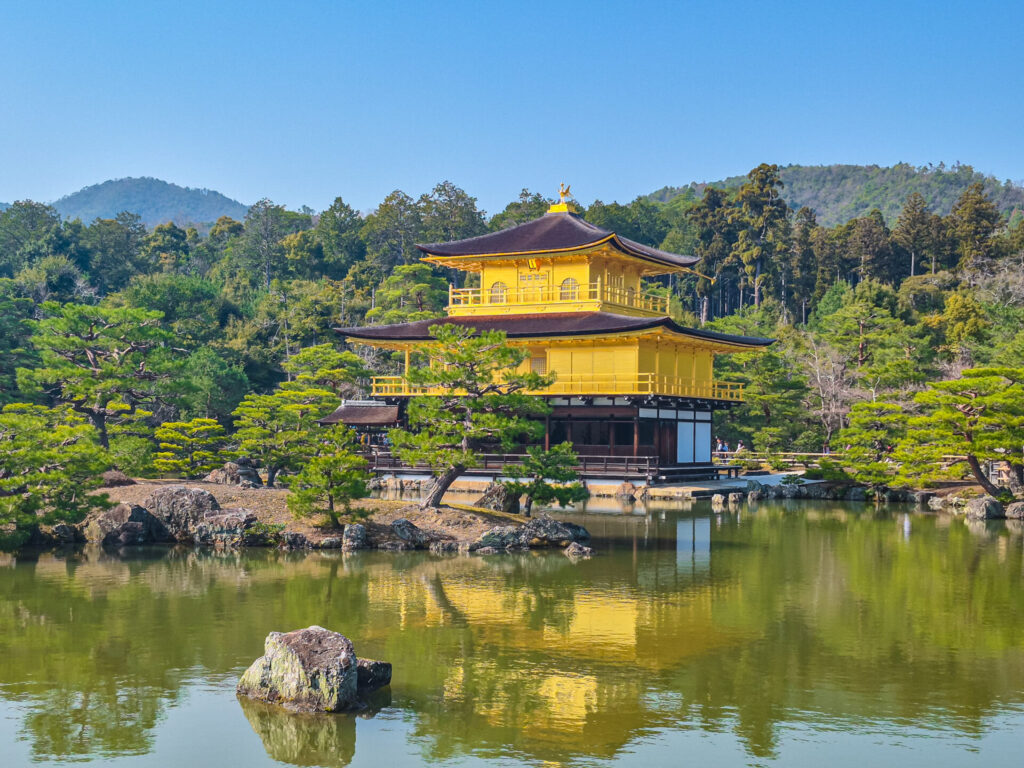
If there were a beauty contest for temples, this one would definitely take the crown! KinKaku-ji is truly stunning in its golden glory surrounded by water and nature. Entry is 500 yen ($3.50) and you have to follow a one-way loop around the temple. It took us around 45 minutes. If you’re thinking about whether it’s worth the trip out of town (about 40 minutes by bus) for this temple, let me assure you, it absolutely is! It’s such a unique place, and the grounds are lovely as well.
16. Visit the historic Nijō Castle

This castle is a true piece of Kyoto’s history, built in 1603 and even briefly used as the Imperial Palace around 1867. It is a World Heritage Site with gorgeous, traditional buildings and gardens.
Entry costs 800 yen ($5.5). It is a really cool piece of history to see in Kyoto.
How many days in Kyoto is enough?
I get that trips to Japan can be pretty packed, but I really think you should spend at least three days in Kyoto to check out the main sights. If you’ve got some extra time, it’s worth wandering off the beaten path a bit to uncover a more genuine side of the city.
Related article: The Ultimate 3-Day Kyoto Itinerary
Where to eat in Kyoto?
Some of my favourite places to eat in Kyoto were:
- Kyoto Gion Okaru – delightful cheesy curry Udon that are super authentic (LOCAL RECOMMENDED)
- Nishiki Market – Great for little snacks on the go
- Tantanmen Ebisu Kyoto Ekimae Shop – amazing Ramen
- Kyo KAramen KYO-KARA – also fantastic Ramen
- Sushi Dokoro Ima – nice Omakase
Is Nara closer to Osaka or Kyoto?
Osaka is a little closer to Nara than Kyoto and I decided to do my day trip from Osaka as accommodation there is a little cheaper than in Kyoto. However, you can easily visit Nara from both cities in under an hour.
Related article: The Ultimate 4-Day Osaka Itinerary
Hi, I'm Bell
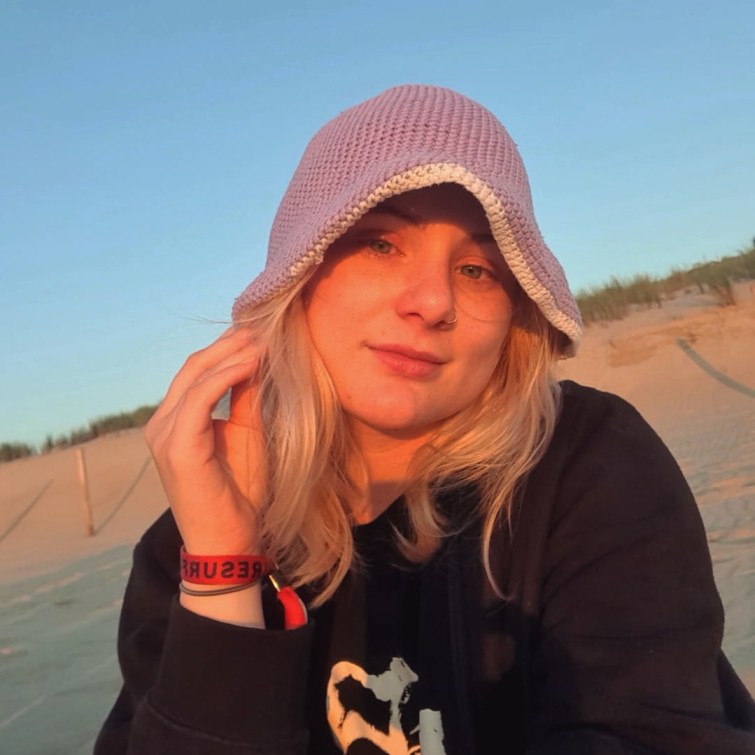
I’m a solo traveller, writer and designer. I created my blog to share the many different ways to travel the world. Learn more about me here!
Grab my Ultimate FREE Packing Guide
Travel Off Script contains affiliate links to support the running of the blog. If you make a purchase through these links, I will earn a commission at no extra cost to you. Thank you.

